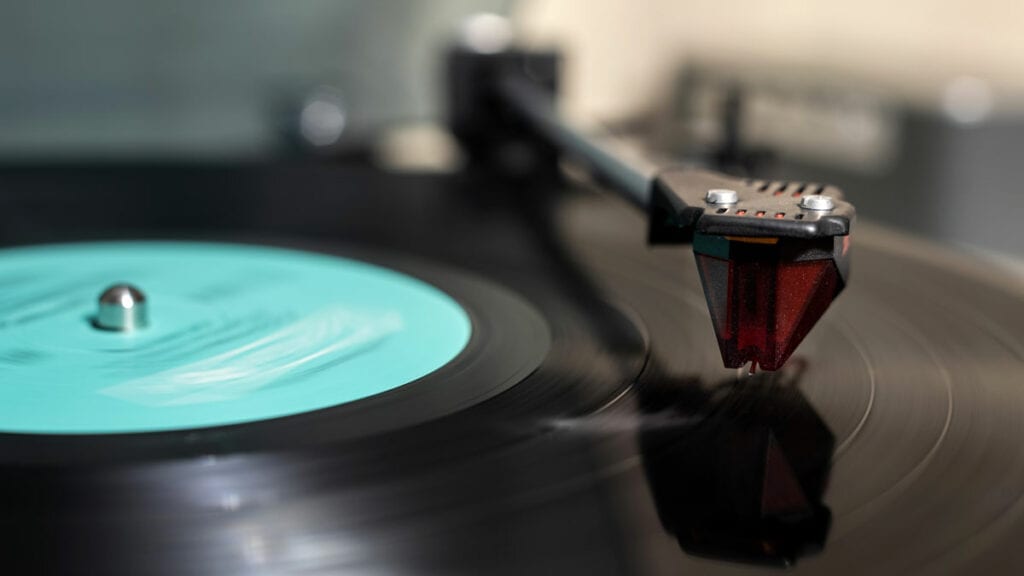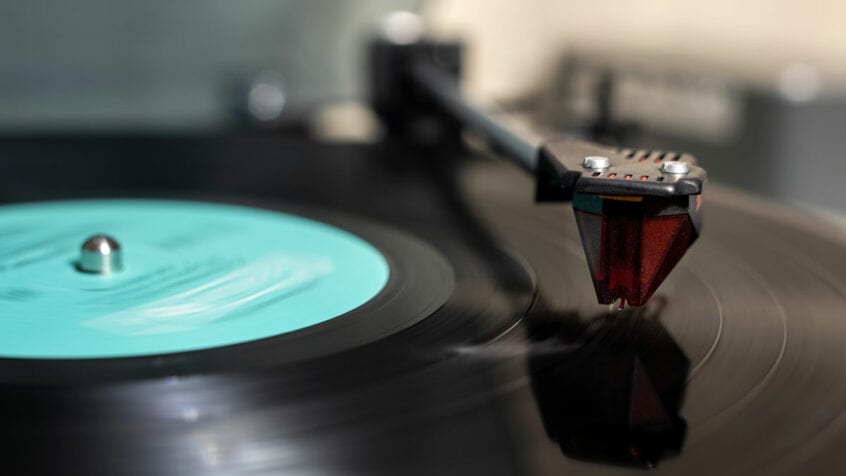When selecting a cartridge for your turntable, you will undoubtedly come across some new terminology if you’re new to the world of vinyl records. The Hi-Fi world is full of technical jargon, and vinyl is certainly no exception.
The bottom line here is there are many different stylus shapes. The stylus (sometimes referred to as the needle) is the little diamond tip at the end of the cantilever which tracks the record groove. As we always say at Sound Matters, this is the most important part of your vinyl setup, as no amount of upgrading your pre-amp, amplifier, or speakers will make up for poor tracking at the source.

Different stylus shapes profoundly impact how the record is tracked and, therefore, how it sounds. The two most common stylus shapes are conical (also referred to as spherical) and elliptical (also known as bi-radial).
Conical (Spherical) Stylus
A conical stylus has a spherical tip, similar to that of a ballpoint pen. Because of this shape, spherical styli have a large radius and subsequently track less of the smaller high-frequency groove modulations. You get a little less detail than other stylus shapes, but they are the least expensive and most widely used stylus type.
One distinct advantage of a conical stylus is that tracking less of the groove can result in less surface noise from any dust and debris trapped deep in the groove. A spherical stylus shape can also be kinder to your records and result in less record wear, but only when they’re tracked light (typically under 2grams). Sadly, there aren’t many models on the market that will allow you to track much lower than 3grams. Most spherical DJ cartridges use spherical styli for their performance in scratching and backspin applications.

Examples of cartridges including a conical tip include the highly affordable Ortofon OM 5S. Fantastic for those concerned with record wear as the tracking force is a nice and light 1.75g.
The Audio Technica AT-XP3 is a DJ-style option with a higher tracking force of 3g, but it claims to offer all the benefits of a DJ cart, only with a more ‘HiFi’ sound.
Elliptical (Bi-Radial) Stylus
An elliptical (or bi-radial) stylus has dual radii and makes contact across a larger area of the groove wall, which allows for more precise tracking. The result is richer frequency response and detail, improved phase response, and lower distortion — especially in the inner grooves that are harder to track. The drawback is faster tip wear, and you’ll need to pay particular attention to cartridge and tonearm alignment for the best results. The more precise the instrument, the more crucial proper setup and alignment become. As the stylus covers more of the groove wall, an elliptical stylus may be less forgiving than a conical stylus if the record is damaged, poorly cut, or dirty.

For an affordable entry to elliptical performance, try the Audio Technica AT-VM95E.
One step up, but still in the affordable category is the Ortofon 2M Red. This very popular stylus comes pre-installed on many turntables. For a very simple, but effective performance upgrade, try swapping the red stylus for the nude-elliptical blue model.
Conical Vs Elliptical Stylus – Which is Better?
The bottom line is, there are no right or wrong decisions when it comes to selecting the right stylus profile, only pros and cons. Conical styli are often affordable, more forgiving, and perfectly suited for DJ use. Audiophile listeners will likely prefer the richer, more detailed, and precise performance that comes from an elliptical tip.
If you own a half-inch headshell mount turntable, you might consider owning both so you can select the most appropriate cartridge for each record. As mentioned, a conical stylus might offer a more forgiving playback experience if the record has imperfections, so owning one you can plug in for those older, more ‘loved’ records could have its benefits.
Conical and elliptical tips are by far the most common and affordable types of stylus, but the story by no means ends here. To explore the full range of styli options (including the pros and cons of each), check out our full article explaining the many different stylus types for vinyl.




Conical stylus. Which sizeis better for grove tracking 2mm or 3 mm. Does the smaller size ride deeper in the groove..?
Yes. Your choice always is Your Best. But IF you want hear with fidelity, media and cartridge must marry. For remastered vinyl in these years, a good elyptical with Moving Coil is correct. But IF you concentrate in details, you alter the original fidelity and context. Today, The satisfaction is over the original.